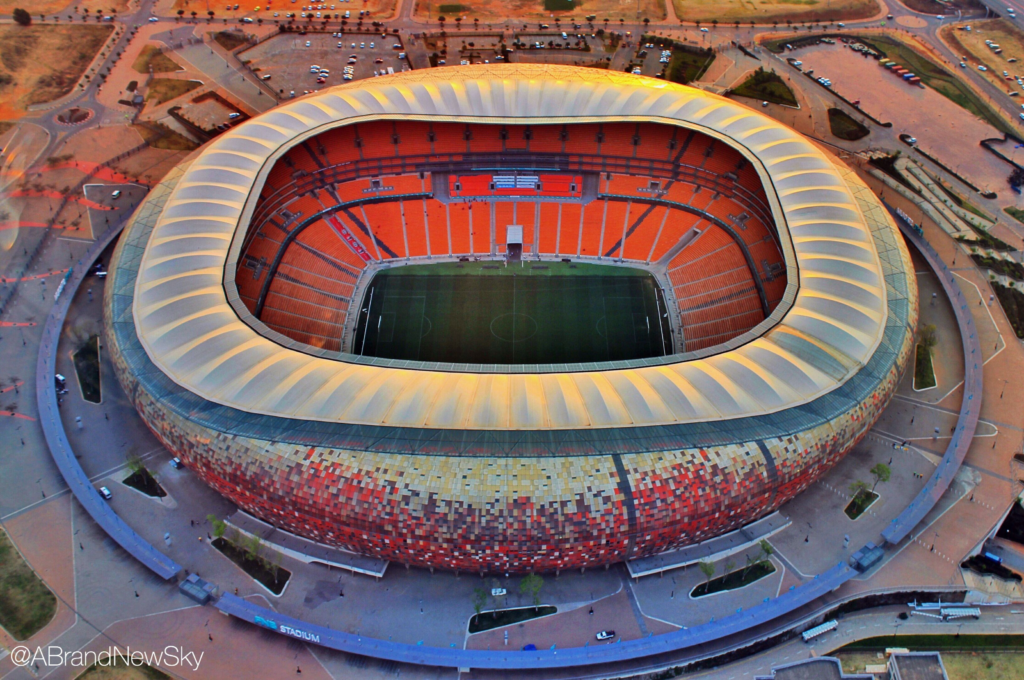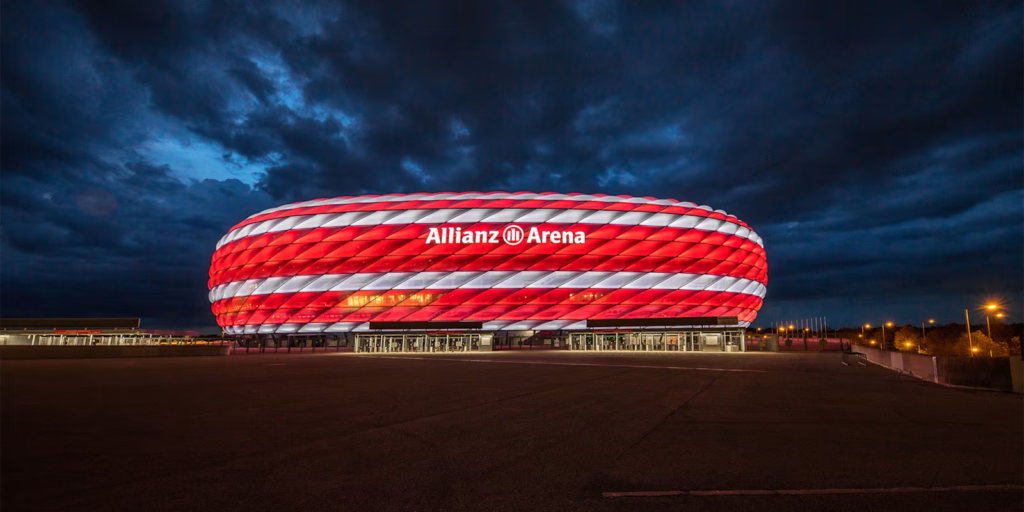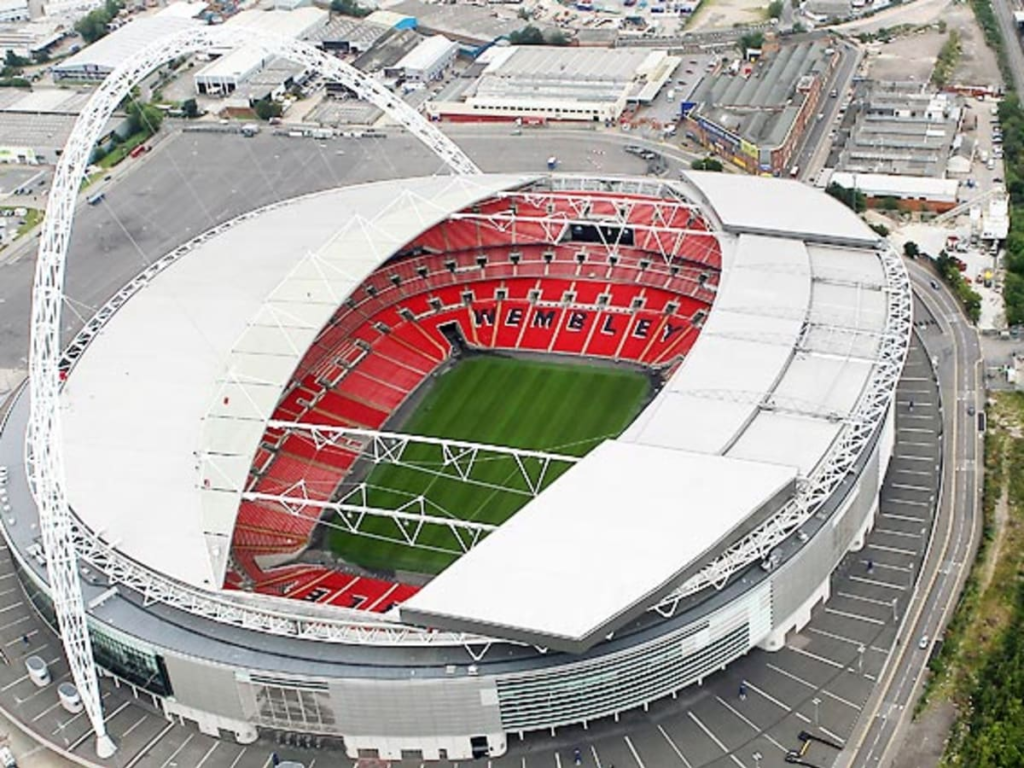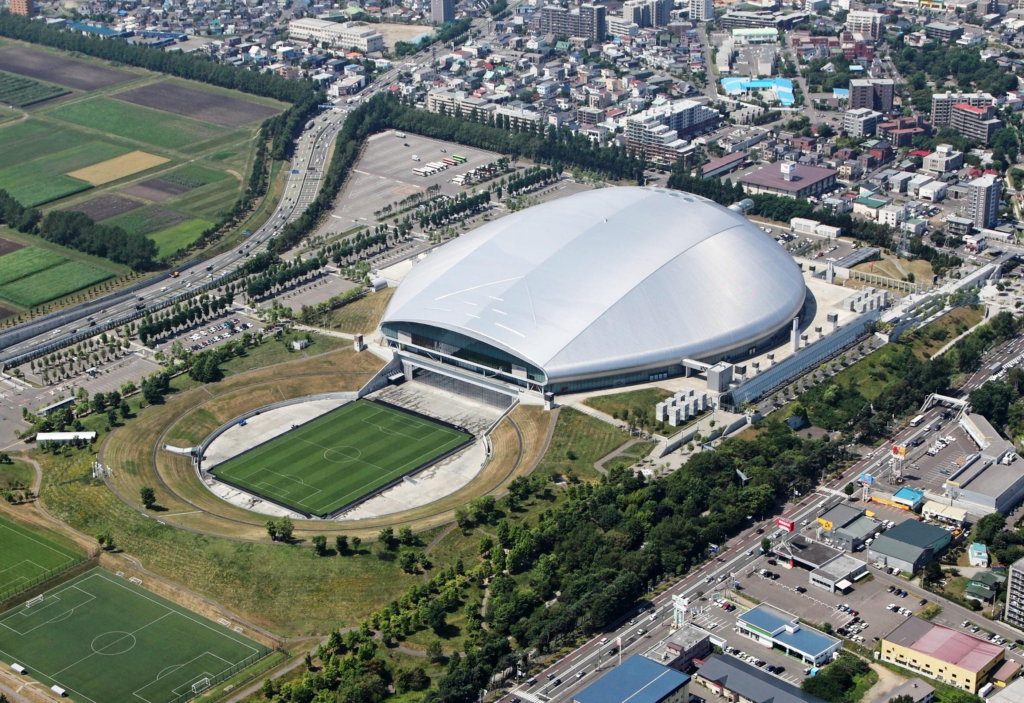
A list of the best designed football stadiums in the world
A stadium often very important to the countries and teams they represent. The structure can symbolise the identity and strengths of the region hosting the event. They are able to unite and attract people from all over the globe that have a common interest of sport. It is known that the design of the arena is able to boost the moods of the football players. So, here are some of the most beautiful and innovative stadium designs.
First National Bank Stadium, South Africa –
Firstly, popularly known as Soccer City, this innovative football stadium was built in 1989 and is one of the most popular in the world. The arena has a capacity of 100,000 making it the largest in Africa. The outside of the stadium is designed to have the appearance of an African pot. The cladding on the outside is a mosaic of fire and earthen colours with a ring of lights running around the bottom of the structure, simulating fire underneath the pot.

Allianz Arena, Germany –
Secondly, opened in 2005, this is the home of Munich’s two main local football teams. This stadium is well known for its exterior of ETFE plastic panels. This is the first stadium in the world with a full colour changing exterior. The primary designers are architects Herzog & De Meuron. Furthermore, the arena can host 75,000 spectators.

AAMI Park, Australia –
When completed in 2010, it was Melbourne’s first large purpose-built rectangular stadium. The COX Architecture designed a “Bioframe” design, with a geodesic dome roof covering much of the seating area, while still allowing light through to the pitch. It is also fitted with LED lights that display a variety of patterns and colours that suit the event.

Wembley Stadium, United Kingdom –
Opened in 1923, Wembley Stadium underwent a significant refurbishment in 2007. So, with a capacity of 90,000 seats, it is the most beautifully designed football stadium in the United Kingdom. Wembley was designed by architects Foster + Partners and Populous. The stadiums signature feature is a 134m lattice arch stretching over the building. In addition, the arch is the world’s longest unsupported roof structure.

Sapporo Dome, Japan –
Finally, designed by Japanese architect Hiroshi Hara. The Sapporo Dome was completed in 2001 with remarkable futuristic features that make it one of the most state-of-the-art football stadiums that are praised to this day. The most unique aspect of this multi-purpose arena is the retractable grass football pitch that can slide in and out of the stadium by a pneumatic mechanism in only a matter of a few hours.






